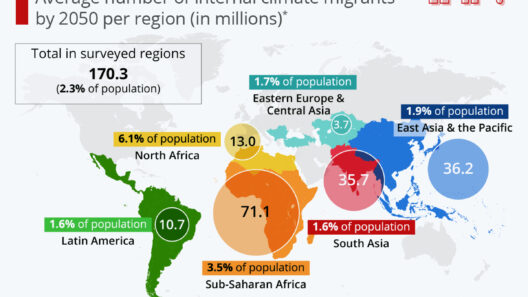Ocean currents, often viewed as mere movements of water, are integral to the global climate system. These persistent, directional flows of seawater significantly influence weather patterns, temperature distributions, and the overall health of marine ecosystems. Understanding how ocean currents operate and their impacts on climate is essential for comprehending the larger framework of our planet’s environmental dynamics.
Ocean currents are primarily classified into two categories: surface currents and deep-water currents. Surface currents, driven by wind and the Earth’s rotation, predominantly affect the upper layer of the ocean. They span vast distances and have significant effects on marine ecosystems and coastal climates. For instance, the Gulf Stream is a well-known warm ocean current that originates in the Gulf of Mexico, flows up the eastern coast of the United States, and extends into the North Atlantic. This current not only moderates temperatures in the eastern United States but also influences weather patterns in Europe, contributing to milder winters.
Deep-water currents, on the other hand, are driven by variations in water density, which is affected by temperature and salinity. This phenomenon is often referred to as thermohaline circulation. As warmer, less dense water travels towards the poles, it cools and sinks, creating a cycle known as the global conveyor belt. This circulation pattern plays a pivotal role in regulating global climates and distributing nutrients throughout the ocean.
The interaction between surface and deep-water currents creates complex climatic systems. The mixing of warm and cold waters influences atmospheric conditions, which in turn affects precipitation patterns and storm formation. For example, the El Niño and La Niña phenomena represent significant deviations from typical oceanic and atmospheric patterns. An El Niño event leads to warming of surface waters in the central and eastern Pacific Ocean, impacting global weather systems by altering rain patterns and increasing the frequency of extreme weather events such as hurricanes and droughts.
Ocean currents also act as a carbon sink, absorbing a substantial portion of the carbon dioxide emissions produced by human activities. Through the process of biological carbon pump, phytoplankton in the ocean utilize carbon dioxide during photosynthesis, thus contributing to the regulation of atmospheric carbon levels. However, ocean currents also play a role in the warming of ocean waters; as temperatures rise, the capacity of the ocean to absorb carbon dioxide diminishes, leading to further implications for climate change.
The interplay of ocean currents with the atmosphere is another vital aspect to consider. Winds, temperature gradients, and the rotation of the Earth all contribute to the flow of ocean currents. For instance, trade winds help initiate and sustain the equatorial currents, while the Coriolis effect modifies the direction of water flow, causing currents to curve rather than flow in straight lines. This interaction creates eddies and gyres, which are circular patterns of ocean flow that can have local impacts on weather systems.
Moreover, ocean currents can influence marine biodiversity. Different currents harbor distinct ecosystems, each adapted to the unique conditions brought about by temperature, salinity, and nutrient availability. Coastal upwelling zones, where deep, nutrient-rich waters rise to the surface due to the movement of currents, support some of the world’s most productive fisheries. Conversely, the alteration of these currents due to climate change poses a risk to these ecosystems, leading to shifts in species distribution and potential loss of biodiversity.
The implications of changing ocean currents extend to socio-economic factors as well. Many coastal communities rely on predictable fishing patterns influenced by currents for their livelihoods. Disruptions caused by climate change can lead to declines in fish stocks, affecting food security and economic stability. Furthermore, rising sea levels, driven by the melting of polar ice and thermal expansion of seawater, exacerbate the impact of currents on coastal infrastructure, leading to increased vulnerability to flooding and erosion.
A critical challenge moving forward is the need for comprehensive monitoring and modeling of ocean currents to better understand their impacts on the climate system. Advances in technology, such as satellite oceanography and autonomous underwater vehicles, are enhancing our ability to track currents and their dynamics in real time. Furthermore, interdisciplinary collaboration among oceanographers, climatologists, and environmental scientists is crucial to develop strategies for mitigation and adaptation to changes induced by oceanic processes.
Public awareness and education surrounding the significance of ocean currents in shaping climate are also paramount. By fostering a deeper understanding of these dynamics, individuals and communities can better appreciate the interconnectedness of ocean health and climate stability, encouraging actions that support sustainability and conservation efforts.
In conclusion, ocean currents are far more than mere water movements; they are a driving force behind global climate regulation, marine biodiversity, and human socioeconomic systems. The complexity of their interactions with the atmosphere and ecosystems illustrates the intricate web of life on Earth. A thorough comprehension of ocean currents is not only vital for scientific pursuits but also for informed public policy and conservation strategies that aim to protect our planet’s future.






